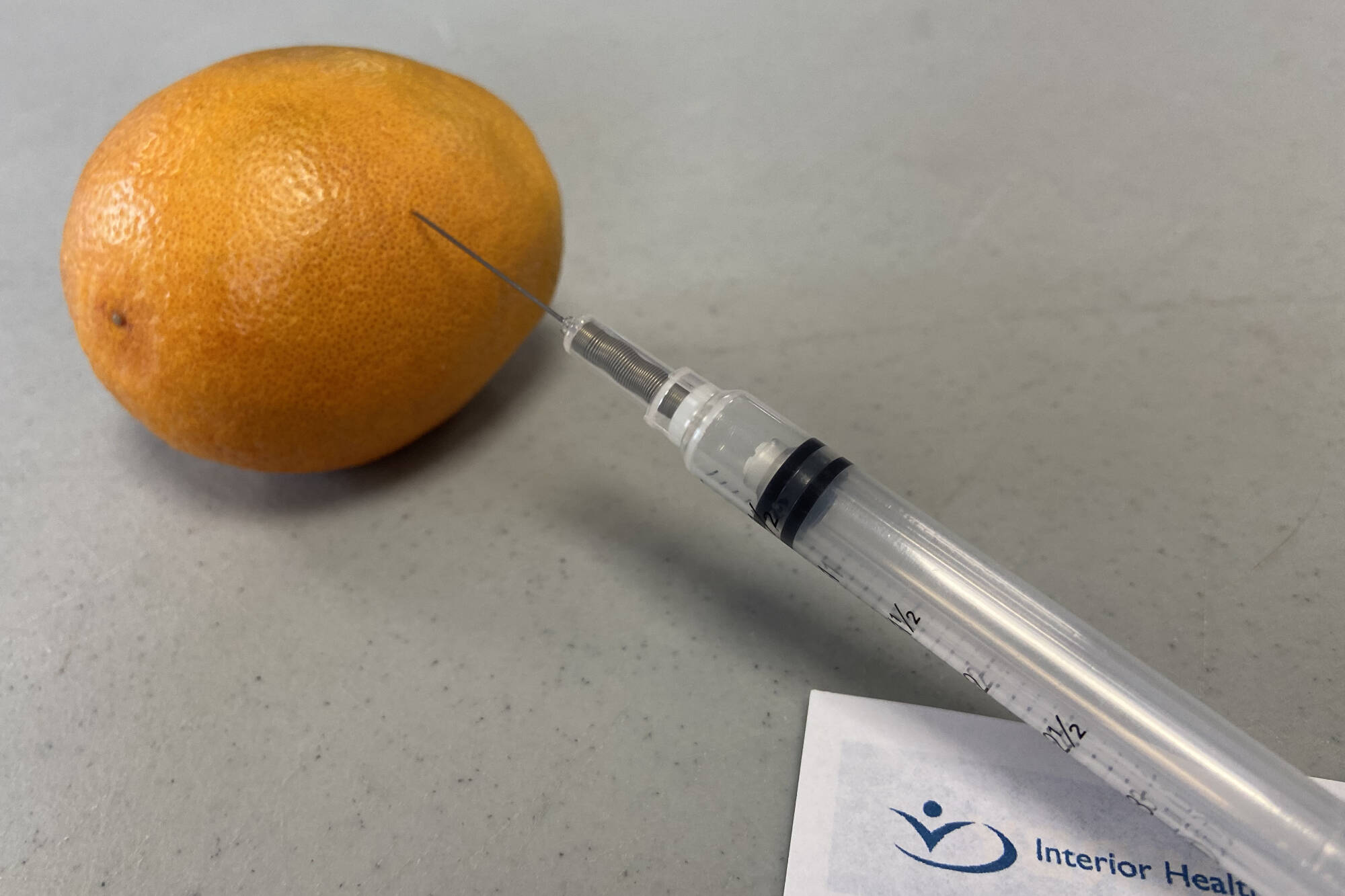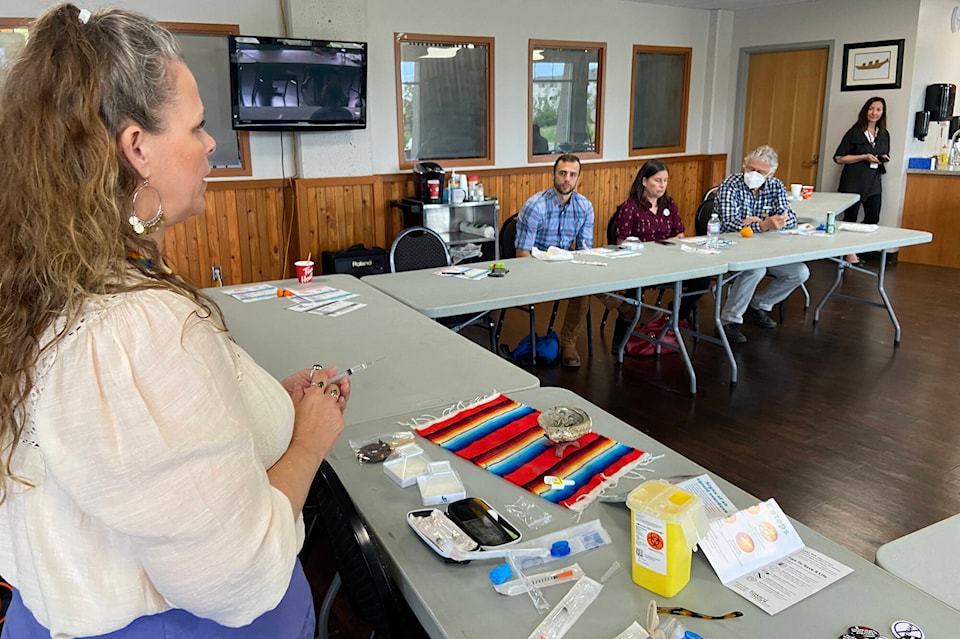Every one of the 19 people who died in Enderby due to an overdose was a person who mattered, who was loved and who had dreams.
The North Okanagan community has the third highest rate of drug toxicity deaths in B.C., under Upper Skeena and Merritt.
Death rates (per 100,000 people) rose from 13 in 2016 to 102 in 2021 for Enderby and last year alone saw eight people die from toxic drugs.
“They all meant something to somebody. They weren’t just a crackhead,” Splatsin chief Doug Thomas said.
Moving society away from using such derogatory language and removing the stigma is just one way we can help, according to Thomas and Interior Health (IH).
The health authority recently made a presentation to Enderby and Splatsin council along with Naloxone training to highlight the steps needed to combat this overdose crisis.
“We are talking about people who loved, who had dreams and who were loved,” said Alison Houweling, IH regional harm reduction coordinator.
READ MORE: Enderby among areas with highest overdose death rates
The stigma that those who are struggling with drug use feel when they are called a junkie and treated poorly is both internalized and external.
“This is 100 per cent the opposite road from healing,” Houweling said.
There is a kinder way of speaking about these individuals, First Nations Health Authority Indigenous educator Tonya Robitaille said.
”It’s just gentler ways of speaking to people and realizing that these people are human,” said Robitaille, who shared her own struggles.
Her father was a residential school survivor and later in life struggled with alcohol use. She grew up watching this and then herself had addiction issues that her children also took on. Now she has a son on the streets of Penticton who is addicted to fentanyl.
Her situation is not unique.
First Nations people are dying from toxic drug use at a rate 4.8 times higher than other B.C. residents.
“First Nations deaths have almost doubled between January and May of 2022,” said Robitaille.
First Nations women are dying at a rate of 8.7 times more than non-Indigenous women in B.C.
“First Nations women have a hard time asking for help because what’s the first thing that happens, their children are removed.”
Currently six people are dying everyday in B.C. from drug toxicity, with the average age being 44.
The recent news of decriminalization for those found with small amounts of illegal drugs is another step in the right direction, according to many at the presentation.
“It helps people access healthcare instead of ending up in the criminal justice system,” said Karin Goodison, IH medical health officer.
And attempting to save lives with Naloxone is another.
The group was given training and kits and told that if they come across anyone unresponsive to SAVEME: stimulate (try and wake them and call 911), airway (check for obstruction), ventilate (give breaths every five seconds), evaluate, muscular injection (administer Naloxone, ) and evaluate (if another dose is needed after waiting five minutes).
“If you find someone unresponsive you can safely assume they have had an overdose,” said Robitaille, adding that administering Naloxone to someone who is not overdosing won’t hurt them.
Currently, the level of toxicity in drugs is beyond what the kits come with, therefore it is urged to carry extra doses in each kit.
“The overdoses we are seeing now are getting six, seven, eight doses,” Robitaille said. “The last one we had was up to 11.”
Local leaders and health workers want to normalize having the life-saving kits in possession.
“It needs to be as normal as, ‘Do you have a condom?’ ‘Ya here ya go,’” Enderby Coun. Raquel Knust.
In Enderby, they are available at the health unit, pharmacy and for First Nations members at the Splatsin health centre.
But as Houweling points out, “We are not going to Naloxone our way out of this crisis.”
Thomas asks his peers in every level of government, and at every organization to think, “what if it was their child?
“We have to be willing to put a hand out to help them out and not judge. It’s all hands on deck. Putting these people in jail hasn’t worked.
“Everybody has a story. That person is somebody’s child, they’re not just a crackhead. They are somebody that is traumatized and is medicating themselves.
READ MORE: Overdoses and suicides among teens concern Okanagan parents
@VernonNews
newsroom@vernonmorningstar.com
Like us on Facebook and follow us on Twitter

